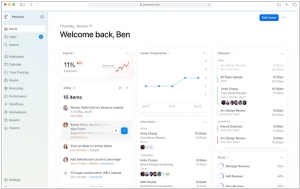AWS WAF vs Cloudflare
January 07, 2025 | Author: Michael Stromann
7★
AWS WAF is a web application firewall that helps protect apps and APIs against bots and exploits that consume resources, skew metrics, or cause downtime.
14★
Cloudflare is a global network designed to make everything you connect to the Internet secure, private, fast, and reliable. Secure your websites, APIs, ...
When you think about the vast, turbulent chaos of the internet, populated by malevolent bots, dubious scripts and enough SQL injections to keep a database administrator awake for a millennium, it’s no surprise that web application firewalls (WAFs) emerged to stop the madness. AWS WAF and Cloudflare, for example, are like two intergalactic hitchhikers armed with improbability drives—they’re both trying to shield your site from doom but approach the task with wildly different philosophies. Both will gleefully block a sneaky cross-site scripting attack, monitor traffic like an overly curious Vogon and offer enough analytics to drown an Arthur Dent-esque webmaster in data. They even let you write custom rules, which is either a marvel of flexibility or a fiendishly clever way to trick you into doing their work for them.
The differences, however, are where things get interesting. AWS WAF, born in 2015 on the sprawling AWS cloud (somewhere in the metaphorical United States), is a meticulous, rules-obsessed bureaucrat—perfect for enterprises that practically live in the AWS ecosystem. Cloudflare, on the other hand, has been around since 2010 and has the vibe of a hip interdimensional traveler: independent, user-friendly and offering free-tier services like a benevolent alien handing out hyperintelligent marshmallows. AWS WAF demands you configure it via a console or API, while Cloudflare just updates its rules automatically, as if by magic (or a particularly intuitive pan-dimensional being). In short, if AWS WAF is a detailed instruction manual, Cloudflare is more like a towel—simple, practical and essential for surviving the digital universe.
See also: Top 10 Website Security platforms
The differences, however, are where things get interesting. AWS WAF, born in 2015 on the sprawling AWS cloud (somewhere in the metaphorical United States), is a meticulous, rules-obsessed bureaucrat—perfect for enterprises that practically live in the AWS ecosystem. Cloudflare, on the other hand, has been around since 2010 and has the vibe of a hip interdimensional traveler: independent, user-friendly and offering free-tier services like a benevolent alien handing out hyperintelligent marshmallows. AWS WAF demands you configure it via a console or API, while Cloudflare just updates its rules automatically, as if by magic (or a particularly intuitive pan-dimensional being). In short, if AWS WAF is a detailed instruction manual, Cloudflare is more like a towel—simple, practical and essential for surviving the digital universe.
See also: Top 10 Website Security platforms




